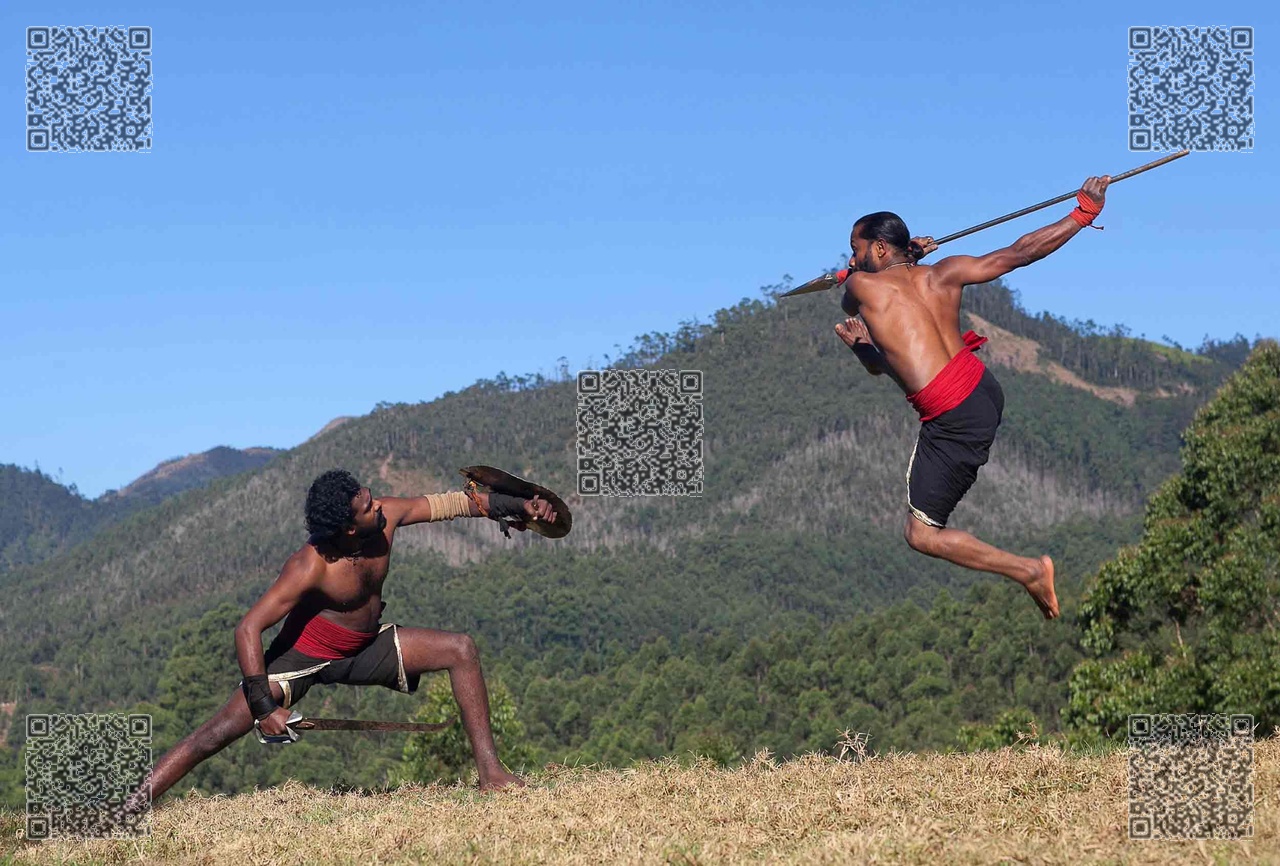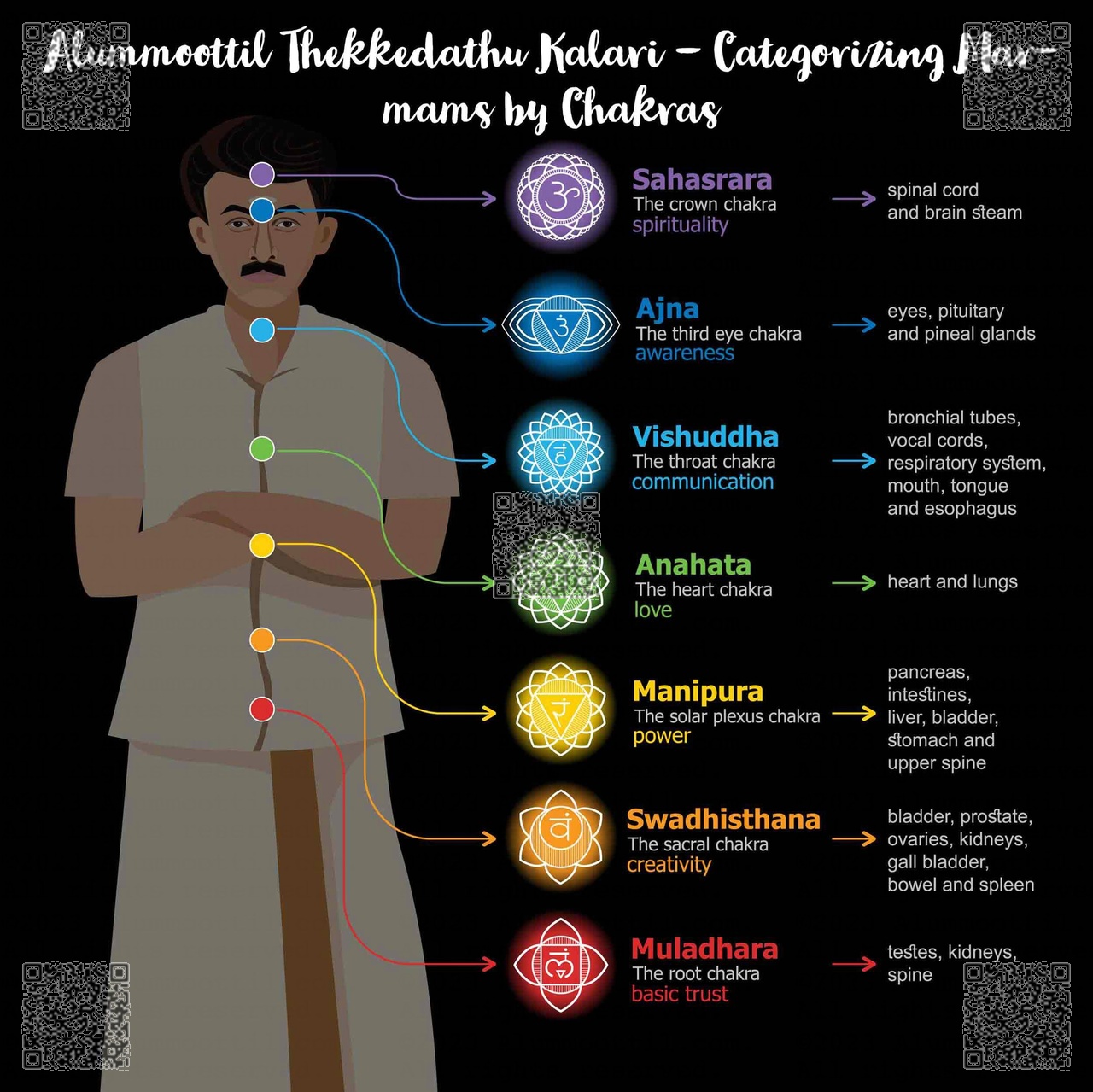One of the significant ways in which Alummoottil® Channars increased their expertise in Kalaripayattu was by inviting Silambam, Kuthu Varisai, Varma Kalai and Adimurai experts from Tamil Nadu to come to the Tharavad guest houses as visiting professors. The education was bi-directional in that the knowledge was transferred from the Kalari experts to the Tamil martial arts experts, and vice versa.
A Kalaripayattu technique whereby an armed attacker can be dealt with by an unarmed person - has very strong roots in Adimurai. It involves attacking at short (using upper cuts, crosses, elbows and knees) for long weapons, and attacking at long (using roundhouse, jabs, push kicks and round kicks) for short weapons. The primary goal is to disarm the assailant. The ultimate goal is to escape (if a civilian), subdue (if a law enforcement officer) or neutralize (if a military officer) the assailant.

The usage of spears by infantry in Kalaripayattu has similarities with the usage of Bamboo as a weapon in Silambam. The range of usage of the spear in close quarters is similar to the bamboo staff, but it evolves into complex moves such as those dismounting cavalry, and even disorienting soldiers hidden in howdah, by thrusting at the vital weak points of armored war elephants.

Marma Kalai (art of vital body points) however seems to be the predecessor of Varma Kalai (the Tamil form). There were expert Ayurvedic doctors among Alumoottil Channars. Although, the origins of these art forms are not purely Ayurvedic, basic anatomical principles were borrowed from it. The strikes are targeted at anatomical structural weak points of the human body like tendons, ligaments, nerves, arteries, veins, joints and even exposed organs. Examples are the liver right beneath the right floating rib; the throat protected only with cartilage; the solar plexus protected only by muscles – all of which can be damaged with unarmed strikes.

Marmas are significant in armed combat as well – piercing the abdomen on the right is less effective; as opposed to the left, where a ruptured spleen can lead to immediate death by exsanguination. In duals, the fighters would focus on striking at the throat of their opponents, it was indeed the Marma art that ensured that the strike occurs precisely severing the various vessels at the Carotid-Jugular complex that would most certainly result in fatality. To achieve lethal results, it wasn’t just the upper body that could be targeted by the Kalaripayattu warrior – he also would know how to precisely attack the thigh to sever the femoral artery which almost always leads to death due to hypovolemic shock.

In addition to the visits, there have been noted travels by Alummoottil® Channars to outer Chera areas in Tamil Nadu / Andhra / Karnataka / Sri Lanka to learn other Dravidian martial art forms descended from Tondaiman, Pandya, Chola, Rashtrakuta, Pallava, Chalukya, Polonnaruwa, and Hoysala heritages.



